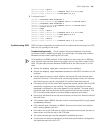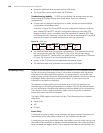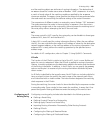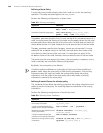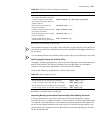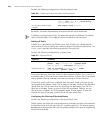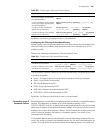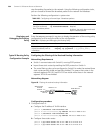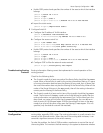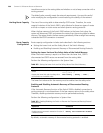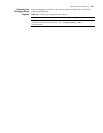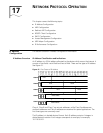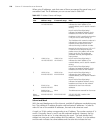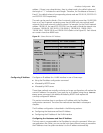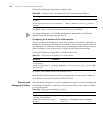
Route Capacity Configuration 265
c Enable OSPF protocol and specifies the number of the area to which the interface
belongs.
[Switch A]router id 1.1.1.1
[Switch A]ospf
[Switch A-ospf-1]area 0
[Switch A-ospf-1-area-0.0.0.0]network 10.0.0.0 0.255.255.255
d Import the static routes
[Switch A-ospf-1]import-route static
2 Configure Switch B:
a Configure the IP address of VLAN interface.
[Switch B]interface vlan-interface 100
[Switch B-Vlan-interface100]ip address 10.0.0.2 255.0.0.0
b Configure the access control list.
[Switch B]acl number 2000
[Switch B-acl-basic-2000]rule deny source 30.0.0.0 0.255.255.255
[Switch B-acl-basic-2000]rule permit source any
c Enable OSPF protocol and specifies the number of the area to which the interface
belongs.
[Switch B]router id 2.2.2.2
[Switch B]ospf
[Switch B-ospf-1]area 0
[Switch B-ospf-1-area-0.0.0.0]network 10.0.0.0 0.255.255.255
d Configure OSPF to filter the external routes received.
[Switch B-ospf-1]filter-policy 2000 import
Troubleshooting Routing
Protocols
Routing information filtering cannot be implemented in normal operation of the
routing protocol
Check for the following faults:
■ The if-match mode of at least one node of the Route Policy should be the permit
mode. When a Route Policy is used for the routing information filtering, if a piece
of routing information does not pass the filtering of any node, then it means that
the route information does not pass the filtering of the Route Policy. When all the
nodes of the Route Policy are in the
deny mode, then all the routing information
cannot pass the filtering of the Route Policy.
■ The if-match mode of at least one list item of the ip-prefix should be the permit
mode. The list items of the
deny mode can be firstly defined to rapidly filter the
routing information not satisfying the requirement, but if all the items are in the
deny mode, no routes will not pass the
ip-prefix filtering. You can define an
item of permit 0.0.0.0/0
less-equal 32 after the multiple list items in the deny
mode so as to let all the other routes pass the filtering (If less-equal 32 is not
specified, only the default route will be matched).
Route Capacity
Configuration
In practical networking applications, there is always a large number of routes in the
routing table, especially OSPF routes. The routing information is usually stored in the
memory of the Ethernet switch. When the size of the routing table increases, it can
consume a significant amount of the switch memory.
To solve this problem, the Switch 5500 provides a mechanism to control the size of
the routing table. This monitors the free memory in the system to determine whether



